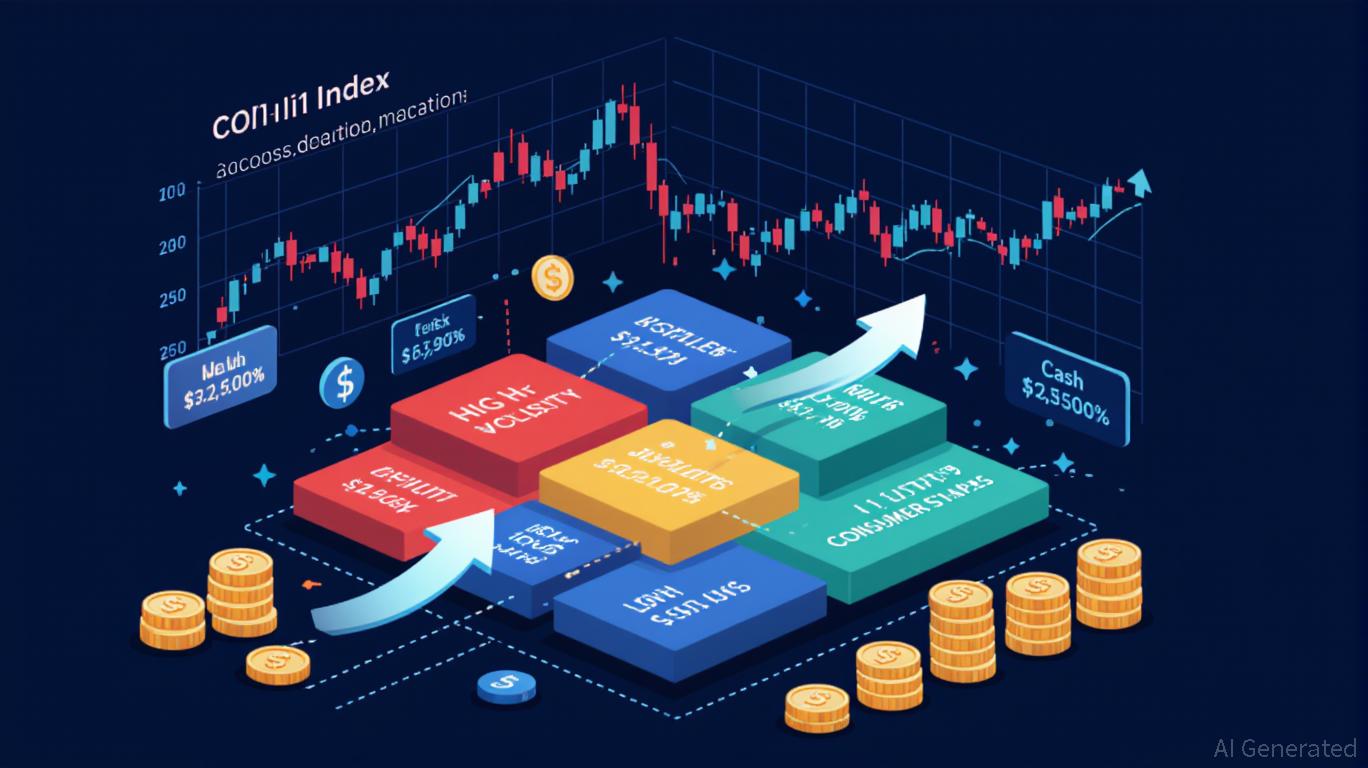Strategic Collaborations Between Public and Private Sectors: Driving Real Estate and Industrial Expansion in Underdeveloped Areas
- Public-private partnerships (PPPs) are transforming underserved regions by bridging infrastructure gaps and driving real estate and industrial growth. - Projects like Madrid Nuevo Norte and Costa Rica's affordable housing initiatives demonstrate PPPs' ability to boost property values and create jobs through mixed-use development and public land utilization. - U.S. data reveals racial disparities in PPP benefits, with communities of color experiencing lower baseline home values despite similar growth rate
Public-Private Partnerships: Revitalizing Underserved Regions
As infrastructure ages and economic growth remains uneven, public-private partnerships (PPPs) are playing a pivotal role in transforming regions that have historically lacked investment. These collaborations combine the strengths of government resources and private sector expertise, paving the way for significant advancements in both real estate and industrial sectors. By breathing new life into city centers and generating employment in industrial districts, PPPs are reshaping the landscape of infrastructure investment and fostering sustainable economic growth.
Revamping Real Estate: Turning Neglected Areas into Thriving Hubs
PPPs are making a substantial impact on real estate in underserved communities by tackling infrastructure gaps. A prime example is the Madrid Nuevo Norte Project (MNNP), a leading urban renewal effort. Through the integration of climate-adaptive planning, enhanced public transportation, and mixed-use spaces, this initiative has boosted property values and attracted private capital to previously overlooked neighborhoods.
This approach extends beyond Europe. In Costa Rica, PPPs have utilized public land to develop affordable, professionally managed rental housing, resulting in a 25.5% surge in multifamily housing construction in semi-urban regions from 2013 to 2023.

Similar patterns are evident in the United States. In Gateway Cities, predominantly minority neighborhoods experienced a 20% increase in home values between 2022 and 2024, paralleling trends in majority-White areas. However, initial property values in communities of color remain lower, emphasizing the necessity for equitable policies to ensure PPPs contribute to closing, rather than widening, the wealth gap.
Industrial Growth: Driving Economic Diversification
Industrial areas in underserved locations are also reaping the benefits of PPP-led improvements. Across Latin America and the Caribbean, the Inter-American Development Bank has facilitated more than 50 PPP projects, channeling $18 billion into sectors such as transportation and sanitation. In Peru, 139 PPP initiatives valued at $36 billion have become models for job creation and improved access to vital services.
In the United States, the Bipartisan Infrastructure Law has fueled a 7.3% annual rise in infrastructure-related jobs through the third quarter of 2025, backed by $1 trillion in combined public and private investment. Programs like California’s Resilient East Bay are transforming industrial land into centers for advanced manufacturing and technology, supported by federal funding. The U.S. PPP market is forecasted to expand from $34.8 billion in 2024 to $61.4 billion by 2032, reflecting a compound annual growth rate of 7.5%.
Measuring Success: Assessing the Impact of PPPs
The benefits of PPPs are increasingly quantifiable. In Turkey, the $244 million Elazig hospital project is upgrading healthcare facilities, which is essential for supporting a productive industrial workforce. Globally, private participation in infrastructure reached $86 billion in 2023, with transportation and energy leading the way. Supportive regulatory environments are also crucial; according to the World Bank, favorable policies can increase PPP investment by as much as $488 million.
In real estate, Florida’s PortMiami Tunnel project illustrates how improved infrastructure can enhance trade and boost property values. On the industrial side, the East Bay Economic Development Alliance is working to transform Contra Costa County’s Northern Waterfront into a center for sustainable manufacturing through its Green Empowerment Zone initiative.
Overcoming Obstacles: Ensuring Inclusive and Sustainable Growth
Despite their promise, PPPs encounter several challenges. The uneven allocation of benefits, as seen in disparities in U.S. federal funding, and the growing demand for advanced skills in infrastructure jobs highlight the importance of designing inclusive programs. Additionally, clear regulations and effective risk-sharing frameworks are vital for replicating successful PPP models on a larger scale.
Looking Ahead
Well-structured PPPs are proving to be more than just financing tools—they are engines for inclusive and sustainable development. By aligning infrastructure, real estate, and industrial strategies, these partnerships are unlocking potential in areas that have long been overlooked. For investors, the message is clear: with the support of PPPs, underserved markets present not only attractive returns but also the opportunity to address some of today’s most urgent challenges.
Disclaimer: The content of this article solely reflects the author's opinion and does not represent the platform in any capacity. This article is not intended to serve as a reference for making investment decisions.
You may also like
Ethereum News Update: Ethereum Drives Institutional Transformation with Amundi Tokenizing Major Fund
- Amundi tokenizes a money market fund on Ethereum , signaling institutional adoption of blockchain-based asset management. - Ethereum's upgrades like PeerDAS and Bhutan's $970k ETH staking highlight growing institutional trust in its infrastructure. - CoinShares' $250M Bitcoin Miners ETF and global digital ID initiatives underscore tokenization's role in modernizing finance. - Ethereum's $3,100 price resistance and technical indicators suggest potential for long-term resilience amid scaling improvements.

Hyperliquid News Today: Hyperliquid Adopts Tidewater’s Strategy to Streamline Crypto Risk Management
- Hyperliquid introduces automated downsizing to stabilize HYPE, which dropped 52% from its peak. - Strategy mirrors Tidewater Renewables' capacity management, balancing short-term volatility with long-term stability. - Hyperliquid Strategies DAT plans $300M HYPE buybacks to inject liquidity and institutional-grade risk frameworks. - Market faces $1.89B+ liquidation risks if Bitcoin/Ethereum surge, prompting automated buffers to prevent cascading sell-offs. - Approach reflects growing DeFi adoption of algo
The Unexpected COAI Price Decline: Key Lessons for Investors from the November 2025 Market Turbulence
- COAI Index's 88% November 2025 collapse stemmed from C3.ai governance failures, regulatory ambiguity, and panic-driven herd behavior. - Market psychology amplified losses as investors overreacted to AI sector risks, ignoring fundamentals and triggering liquidity crises. - Diversification, cash reserves, and AI-driven tools helped mitigate risks, emphasizing long-term strategies over speculative hype. - The crisis exposed dangers of overreliance on AI/DeFi narratives, urging disciplined, diversified portf

CME Suspension: Global Market Vulnerabilities Revealed by Thermodynamic Constraints
- CME Group halted Globex trading on Nov 28, 2025 due to CyrusOne cooling system failure in Chicago, freezing 90% of global derivatives markets. - The outage caused erratic price swings in gold/silver and disrupted EBS forex platforms, exposing vulnerabilities in third-party data center reliance. - Despite post-holiday timing softening immediate impact, the incident highlighted systemic risks from thermodynamic limits in AI-era infrastructure. - CME faces pressure to build redundant systems as it expands c
